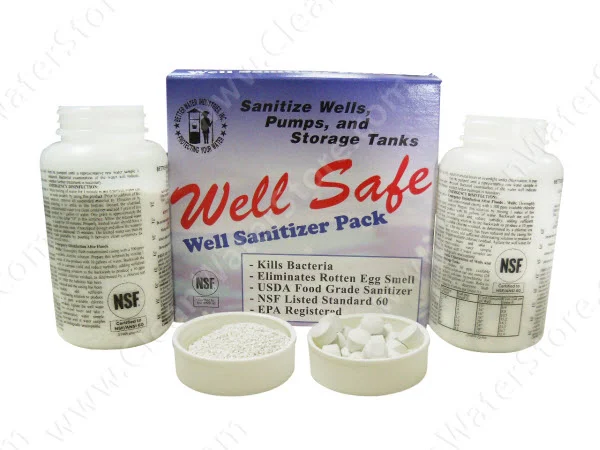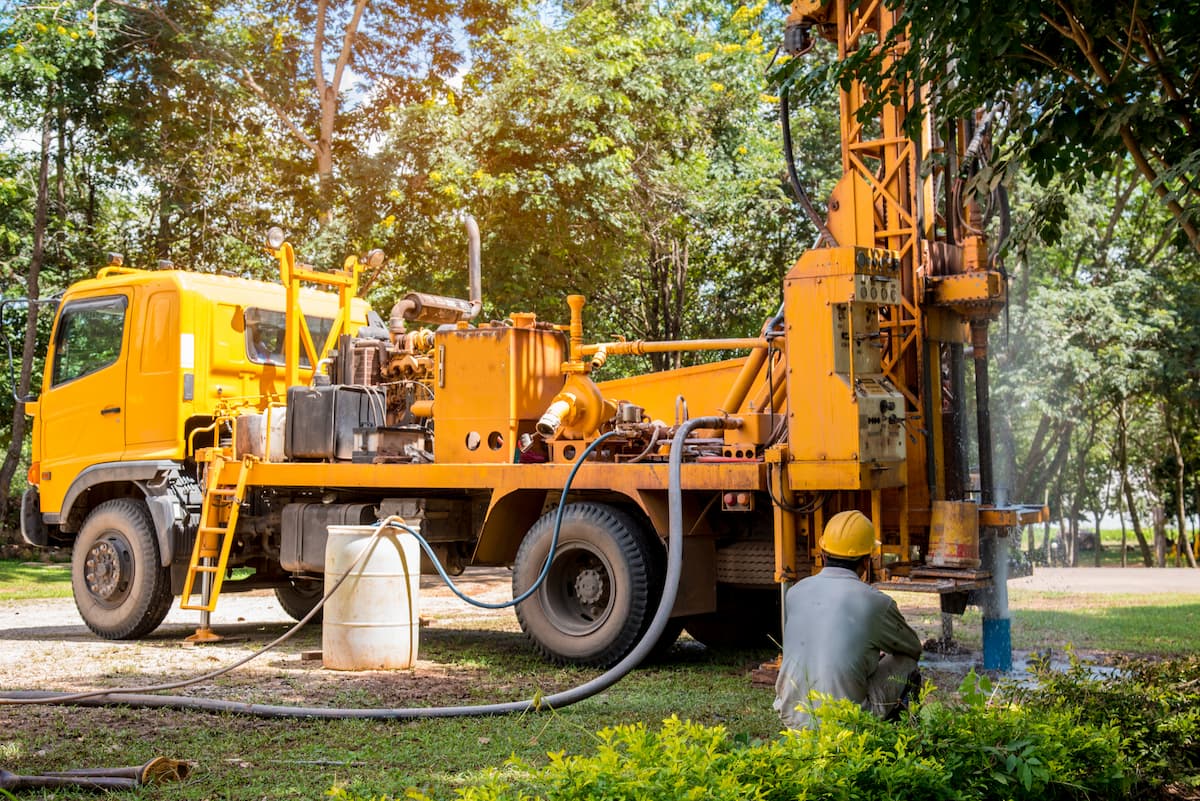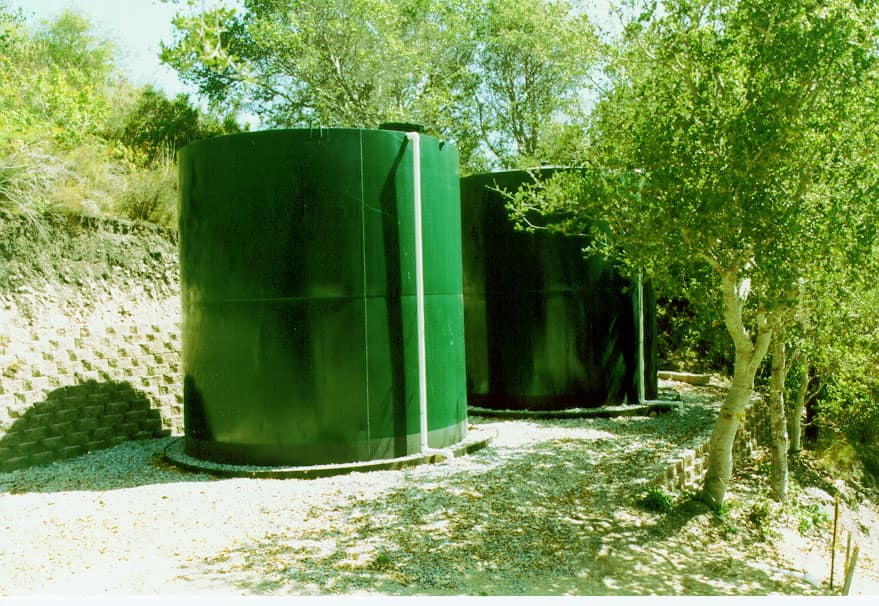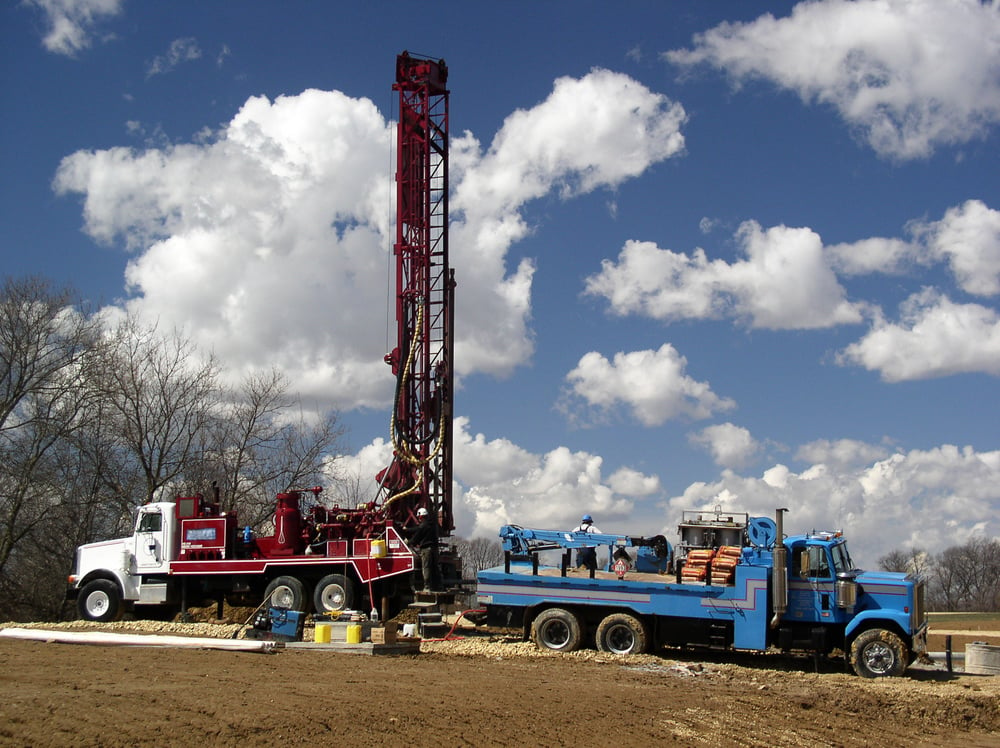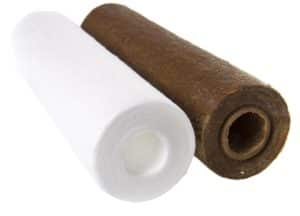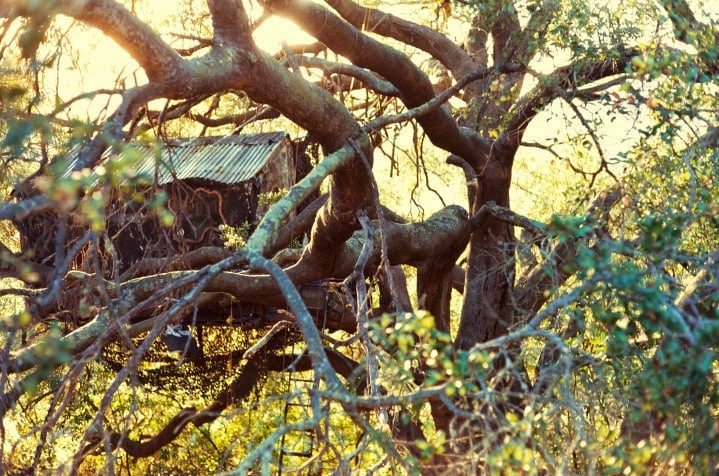Acid Well Water: The Simple Way to Neutralize Acidic Well Water & End Copper Corrosion Problems
Podcast: Play in new window | Download
Subscribe: RSS

Common causes for acidic well water are from acid rainfall due to atmospheric carbon dioxide and other airborne pollutants, and in some cases, runoff from mines.
Pure water has a pH of 7.0 (neutral); however, natural, unpolluted rainwater has a pH of about 5.6 (acidic). The acidity of rainwater comes from the natural presence of three substances (Carbon dioxide, nitrogen oxide and sulfur dioxide) CO2, NO, and SO2. (CO2) is present in the greatest concentration and therefore contributes the most to the natural acidity of rainwater. As CO2 levels rise, acid rain might be increasing as well.
Some items I talk about in this episode are the source of acid water, how it is formed, and what you can do about it.
How to Neutralize Acidic Well Water?
- Test your well water first, for at least: pH, alkalinity, hardness, total dissolved solids
- Use a calcite neutralizer to eliminate the acid pH… OR
- Use a blend of calcite and magnesium oxide (Corosex or Flomag brands etc) for very low pH
- Use a backwash type neutralizer OR an upflow neutralizer, depending on your application and water
- Consider a soda ash injection system if your pH is 5 or below, and/or your water is high in calcium
>
Have a question? Please don't hesitate to email me at [email protected] .
Please don’t forget to subscribe to the podcast on iTunes and give a fair rating. Thanks so much!
Episode 13: Acid Well Water: The Simples Way to Neutralize Acidic Well Water & End Copper Corrosion Problems
Hello, hey, thanks so much for tuning in again to the Clean Water Made Easy Podcast. Gerry Bulfin here. As you may know, I’m a Water Treatment Contractor and WQA-Certified Master Water Specialist. I hope you’re having a nice day wherever you’re listening or however you’re listening.
In this series of podcasts, I’ve been giving useful, easy-to-follow tips and information all about well water, well water treatment systems, and how to improve the quality of your well water.
Today’s episode is all about acid well water. Very common. We'll also talk about acid rain if you’re using rainwater, and spring water, all of which can be acidic in private water systems. One of the most common causes of pipe and fixtures corrosion is from low pH, which means acidic. If it is a pH of less than 7, it is acidic. pH is just a scale. You can think about it as between 1 and 14; 7 is neutral.
I’m also going to give an overview of the different kinds of systems used to treat low pH. Actually, it’s very easy to treat, which is fortunate. I will talk about how copper corrosion occurs from acid water; how to slow down and how to eliminate those blue stains which is very common. The blue stains are from copper corrosion.
Download the Free Guide
We also have a really good guide, a little eBook, 21 pages, called How to Treat Acid Well Water. It has pictures, diagrams, and is very easy to follow. If you don’t want to take a lot of notes when you’re listening to this, and you just want to get the guide, that could be a good way to go. I posted a link in the show notes if you want to get your free copy.
You can get it by going to cleanwaterstore.com or if you can’t find it just email me at [email protected] and I’ll get to you your free copy.
So like I said in this episode we’re going to go over how copper corrosion from acid water occurs, how to slow it down, how to eliminate copper corrosion and get rid of blue stains. We'll go over the main systems used to treat low pH on residential groundwater and those are: calcite neutralizers, calcite Corosex, or Flowmag, blend neutralizers, upflow neutralizers, and soda ash systems. I’ll go over briefly what the differences are.
What causes acid water anyway? Well, common causes for acidic water are from acid rainfall. Mostly due to atmospheric carbon dioxide, and we're seeing more acid rainfall because he CO2 levels are increasing. It comes from other airborne pollutants as well – coal burning, fossil fuels, vehicles – run-off from mines is another way it can happen.
But mostly it’s from the rain. So pure water has a pH of 7 which is neutral. However, natural unpolluted rainwater actually has a pH of 5.6. So it’s naturally a little acidic. The acidity of rainwater comes from the natural presence of carbon dioxide, in some cases nitric oxide, and some sulfur dioxide from coal burning.
CO2 is present in the greatest concentration in air, and therefore contributes the most to the natural acidity of rainwater. This is from the studies that I’ve been able to gather and it’s interesting to think about it. The rain comes down, and eventually gets into the groundwater where where we have our wells, where you pull out the water from. If you groundwater is in an area where the natural rock or fractured rock is limestone, or maybe sand, or some other mineral, it has a huge effect on whether that water would be acidic when you pull it out.
For instance, if you’re in an area where the groundwater is sitting in limestone, well it’s getting neutralized right there. Acidic water dissolves some magnesium or calcium, so you have hard water but no longer acidic, corrosive water. But if you’re in an area where it’s granite, sand, or some other mineral that isn’t going to contribute pH buffering into the water, then the water often comes out of the ground really good quality but it’s acidic. So we see this very commonly.
Over the many years we’ve been at this and helping folks neutralize their water, lots of times the folks have really great water. In other words, it’s low in minerals, low in salt, but unfortunately because it’s coming out of granite, the water is just really acidic. So when it goes into the the house and if they have copper pipes, they get blue stains. Eventually, we get pinhole leaks, corrosion, water heaters are ruined, and so on. It’s fortunately very easy to fix and that’s what we talk about next.
How does it happen? What is corrosion? How does copper corrosion happen? Well, corrosion is actually a very complicated but you can think of it this way: It’s a natural process involving a chemical or electrical degrading of metals in contact with water. So with acid water, signs of corrosion will be like blue staining and pinhole leaks. You might see rusting too.
Like for instance, there are some homes that still have some galvanized pipe in them. Eventually, people are getting rid of that and going to copper or PAX tubing. But a lot of times even if they re-pipe their house, you would still have a little pipe nipple or a short section of the pipe, maybe it’s near the shower, maybe it’s going into the water heater. This acidic water is eating that out and you’re getting rust. And you wonder why do I have rusty water, because my well doesn’t have rust in it. So acidic water with pH in a range of less than 7 is more corrosive to metals than alkaline water. That’s the simplest way to look at it. So you can have your groundwater could be acidic and so can the rainwater. Spring water can be acidic as well. So basically, the acid water is just low in these natural buffering calcium minerals.
What to do? Well, fortunately, it’s very easy to fix. The common systems we use to treat low pH are calcite neutralizers. Calcite is this white mineral which looks like white sand, and it’s just natural pure calcium carbonate. There are different grades of it. The type that we recommend is this high purity kind that just add some natural calcium into the water. That works if your pH is 6 and say 6.9, which is the most common pH we run into with some customers.
Sometimes the pH is less than 6, between 5 and 6. Then we’ll use a blend of calcite, which is calcium carbonate and magnesium oxide. For instance, there are different brands. Some people refer to it as Corosex, which is a Clack brand or there could be Flowmag, which is a brand we use. But basically they are the same. It’s a high purity, natural magnesium oxide. You got a little bit of that. Mostly it’s calcite and a little bit of corosex. Calcite neutralizers and calcite corosex neutralizers are backwashing systems, they backwash out. Then there’s upflow neutralizers and soda ash systems. Those are the main types. We’ll talk about each one briefly and how what’s the best one for your water,
The first thing to do is to figure out what your water chemistry is. Do a simple water test and you want to know at a minimum, what the pH of the water is. Again, that’s a scale from 1 to 14. Lemon juice has a pH of 2 or 3. In other words, if its acidic, it has a low pH. Ash soda is acidic, that is a low pH. Then if is alkaline substitute like baking soda, it has a high pH.
So you want to know what the pH of the water is, what the hardness is, what the total dissolved solids are, and the alkalinity. It is good to have those 4 things tested at a lab or you can test it yourself. It’s often a good idea to at least do one pH test on site because the pH can rise.
For instance, say you want to get your water tested and you filled the sample three quarters of the way so there is some air in it. Then you take it to the lab, and they let it sit around for a day before they test it, the pH will be a little bit lower because one of the causes of low pH is dissolved carbon dioxide in the water. The dissolved carbon dioxide creates carbonic acid. If you were to spray this water in the tank, let it sit around, or put it in the glass, it will naturally lower the pH. So it’s very important to do at least one pH test at the site. It’s easy to do and you can also have a test by a lab. Those are the main things you want your water to get tested for.
You can take those results and you will know what you’re dealing with and what kind neutralizer will be best for your system.
First, let’s talk about the Calcite and Corosex blend neutralizers. This is one of the most convenient ways to raise pH. A picture of these is in the guide. A tank for a typical home is usually 3 to 5 feet tall and 10-12 inches wide. These tanks are filled two thirds full of calcite.
They have an automatic backwash control valve so when the water flows in, it flows down to the calcite media. It’s then instantly neutralized. The acid water goes in and comes out neutral. For some folks, they say that after a week or 2 the blue stains stopped. They can have a pretty strong and immediate effect of slowing down the corrosion in the pipes.
Neutralize Acidic Well Water
We usually recommend a backwash neutralizer to neutralize acidic well water. There’s some controversy and people have different opinions about it, but essentially, if you have a backwash type, once or twice a week it’ll turn on in the middle of the night. And at natural water pressure, it will backwash and lift the media up inside and flush the waste water out to drain. It’ll flush out any accumulated sediment or rust that’s trapped in the media. It acts like a filter for your home, too. It gets rid of the little sediment. Calcite is pretty fine and can trap sediment.
More importantly is, when it’s doing that, the minerals are grinding against each other a little bit and it’s reclassifying the bed. What that means is, you’re getting a way for the mineral to get stirred up and dissolve a lot better over time. We’ll talk about upflow neutralizers next.
In the upflow neutralizes, the water flows up through the media instead of down and around. There is no filtering for the most part because water is flowing up through the calcite and there’s no backwash to them. It’s a simpler system and cheaper. But water can channel around the media and won't act as a filter.
For the backwash system, you’ll need a backwash aligned to your drain. Or, because the water is not toxic, you can run it around outside. Anyway, there are different ways to deal with the backwash. Nothing toxic in it, just your well water. You can flush it into the drain or septic tank.
In any case, you have the backwash filter vs. the upflow. We generally found the backwash to work better. It’s worth the little bit extra of money and time. Over time, the media just dissolves naturally. Then once a year, you can unscrew the little plug up on top of tank, and all you have to do is pour more calcite in. You can keep this neutralizer about two thirds full of this natural white mineral and that will eliminate the pH problem.
So how does it work? Well basically as the water flows through it slowly dissolves some calcium and magnesium and that’s what does it – erases pH by adding calcium and magnesium. Usually, it depends on how hard the water is. One common question we get is, “Hey will the neutralizer make my water hard? I like my water the way it is now.”
It does increase the hardness of your water but it’s not by that much. Usually folks have naturally soft water. A lot of times acidic water is naturally soft water too because in the ground there’s no hardness or minerals to dissolve into the water. The hardness levels are usually pretty low and when it flows through the neutralizer, it’s harder, but it’s not that bad.
Depending how hard the water is, we usually recommend to folks: “Just try the neutralizer first. Try it for several months”. It’s better anyway because it will run the hard water through your copper pipes and stop the corrosion quicker, and later if you want, you can always put a water softener in to remove calcium. The water softeners do not lower pH and do not make water more corrosive. So it won’t hurt the corrosion of the pipes at that point.
So essentially the size of the systems are based on how fast the water is flowing through the pipes. There are only a few different sizes for most common-sized homes – 1, 2 or 3 bathrooms. For big homes, there’s a couple of different sizes. The idea is that it’s nice to get a size where you can go at least a year without adding any more mineral to it.
We usually recommend a 1½ cubic foot or 2 cubic foot of the calcite mineral in the tank. You can see the sizing guide, it’s very easy to size them. If you are getting the backwashing type, the other important thing to know is how many gallons per minute your well pump is putting out.
Say, it flows at 10 gallons in one minute, that’s a 10-gallon per minute. If you have a low flow rate, say 4 gallons per minute, you wouldn’t want a giant neutralizer because it couldn’t backwash it at the right rate. So you want to get a size neutralizer that will backwash at the right rate. A pretty big one, like a one and a half cubic foot one, they can get by with say 7 gallons per minute for backwash. You can look at the table too and see the different flow rates that are required for the different backwash types.
Now we’re going to talk about upflow neutralizers and like I said, the upflow neutralizers work great. The water flows from the bottom to the top and you don’t have to be so concerned about the backwash rate but there are a few issues to it. One of them is when you add more mineral to it, you have to be really careful to flush that thing really good. When you first add it, you have to really flush it. So would open the hose bib or valve downstream of the neutralizer and flush that good. When you first start that up, in this case it is an upflow, the water flowing comes out sort of milky white. What can happen if you don’t flush it correctly then the media can partially solidify. This cuts back on your flow rate and can actually cause pressure and flow problems.
So if you’re getting the backwash type it’s really convenient because when you first put in the service, it backwashes, cleans it up, and you’re good to go. With neutralizers, you got to be a little careful with the neutralizer. Be careful that you really flush that thing really well.
So both backwash neutralizers and upflow neutralizers work in the range between 5 and 6.9, so if your pH is 7 of course you don’t need a neutralizer. If your pH is 6.9 depending on whether you’re getting copper corrosion, you might not need one either. If your pH is 6 and 6.9 we recommend a standard calcite kind, a 100% calcite. When the pH gets below that, between 5 and 6, then you need to use a blend of calcite and magnesium oxide.
Okay. That’s basically the 2 types of neutralizers. For most people, neutralizers are the best way to go. It’s very easy. You don’t have to mess with it every month. There’s no toxic chemicals you are adding. You can't set it and forget it because if you do that, a couple of years go by and all of a sudden the tank is empty and your blue stains will come back. We actually heard that a bunch of times over the years. Folks say: “You know I have a neutralizer in, working great, a couple of years went by, now I have the blue stains again.” We come to find out the tank is literally empty. It’s best to check it every 6 months to a year and just make sure it’s two thirds full.
There are some cases when neutralizers don’t work well. That’s why I’m going to talk about this next one, which is soda ash. Soda ash has done really well too. If your pH is less than 5, say 4 or 4.5, then you got to add a lot of magnesium oxide because calcite doesn’t work that well at that low pH. You have to use a lot of magnesium oxide to get it to work but your water is then hard. It adds a lot of hardness to water. The other thing is, it doesn’t really work that well, we found.
In the beginning, the pH is a little high and then after a while, the pH drops or if you use a lot of water during the day ,you can get a bleed through of acid water. So generally if your pH is the less than 5, we recommend soda ash. Soda ash is sodium carbonate, a food grade sodium carbonate. Sodium bicarbonate is baking soda and sodium carbonate is pretty much like baking soda. It looks like baking soda but it’s a special potable water grade. It’s NSF certified for drinking water. It’s a powder and basically, you mix it up with warm water and pour it into a solution tank which might be 15-30 gallons in size.
It has on top of it, or somewhere nearby, a small pump that pumps a tiny bit of this soda ash solution into your pipe whenever the well water runs. The simplest way to set them up is when your well pump turns on, you have the metering pump from the soda ash turn on and it injects usually 1 to 200 parts per million.
If you listened to the episode on Chlorination and Peroxide, we're usually injecting 2 to 10 parts per million chlorine or peroxide, and with soda ash, you need a lot more. You can dissolve as much as you can into the water and there are tables and charts on how to do it, very simple. For that, you’ll need 100 to 200 parts per million You inject a lot of the solution into the water in order to get the pH to rise. It works really well is very easy to adjust.
So with the calcite neutralizer, basically you get is what it will do. You can’t really adjust the pH and it will be between 7 & 8, but it will vary a little bit. With the soda ash feeder, you can adjust the pH because you’re injecting it into a pipe where the water is flowing at the same rate all the time. The injection point is between the well and pressure tank. You can check the soda ash there then you can really dial it in. What you can do is easily turn the metering pump up or down, so you can say, “okay I got my pH at 7, I want to get my pH 7.8 or 8″. Then it’s easy to test it with a pH meter or a simple reagent where you drop a little reagent chemical into a test tube. It’s a test that you can do yourself at your site very quickly.
So we recommend soda ash system if your pH is less than 5. Or in some cases if it has a very high flow rate, say a farm or a business where they might have a 40-50 gallons a minute, then having a giant calcite neutralizer might be a little hard to deal with annually. We have some folks using 10 and 15 foot calcite neutralizers for office buildings because they didn’t want soda ash for some reason. We also used neutralizers on oil rigs, and a bunch of different ships that need calcite when they purify water for drinking.
Generally, soda ash works well if you have high flow rate, like 40-50 gallons per minute. The downside is you do have to add soda ash frequently. There's too many downsides to soda ash. One is, you may have to check the solution every couple of months and add more solution to it. The other downside is, it’s sodium carbonate so you’re injecting sodium into the water. A lot of people don’t care. Th recommended sodium guideline is about 2000 mg per day. If you put 100 mg in one liter, then when you drink 1 liter or 1 quart, you’re getting an extra 100 mg. of sodium in your diet. If you’re on sodium restrictive diet, that could be a concern. It doesn’t affect the taste much, we’ve never had many people complain about the taste of the soda ash. It’s a very tiny amount.
The soda ash might cost a little more but if your pH is less than 5 you don’t really have much choice if you want to do it correctly.
Okay. So the soda ash feeders work well, and the calcite neutralizers work really well, it’s just a matter of figuring out what you're going to do and what type you’re going to get.
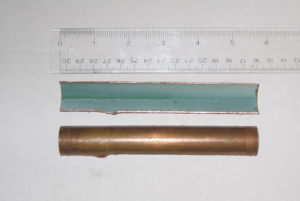
It’s a good idea to monitor the copper and make sure it’s going down. It’s not a guarantee that just because you neutralize the pH in the water your copper corrosion issues will be completely eliminated. But generally, it does. I think that 90% of the time, it solves the problem right off. But we recommend folks check their copper levels periodically. Make sure there’s no copper in the water and also check the pH. Make sure the pH is neutral.
And if the mineral levels drop, add more of the calcite mineral to it. It is very easy to do it yourself, and of course, you can also hire a local water treatment guy. They’ll come out and add the calcite for you but it's pretty easy to do as far as maintenance and quality control goes.
In this episode, we went over where acid well water comes from, how it occurs, calcite neutralizers, calcite corosex, blend neutralizers, when to get an upflow, versus a regular backwash downflow, blend neutralizers, and when to get a soda ash system.
I didn’t go a lot into copper corrosion as there are some cases where you have a copper corrosion and your water is not acidic. We got a lot of folks who have alkaline city water and well water too and they got terrible copper corrosion. There are several reasons.
Some we're going to go over that in different episodes but the first thing to do when you see copper corrosion is just do a pH test at the very minimum to see if you have acid water and you can start there. Whatever you do, you have to fix that acidic water anyway. So that’s what we recommend.
Hope that’s very helpful to you and please get your free guide by going to the site, cleanwaterstore.com or you can email me at [email protected]. Have a nice day!



